The Caelum constellation does not contain any named stars and has no stars brighter than magnitude 3.00 or located within 10 parsecs (32.6 light years) of Earth. The brightest star in Caelum is Alpha Caeli with a magnitude of 4.4 and the nearest star is HD 30876 and lies at a distance of 57.86 light years from Earth.
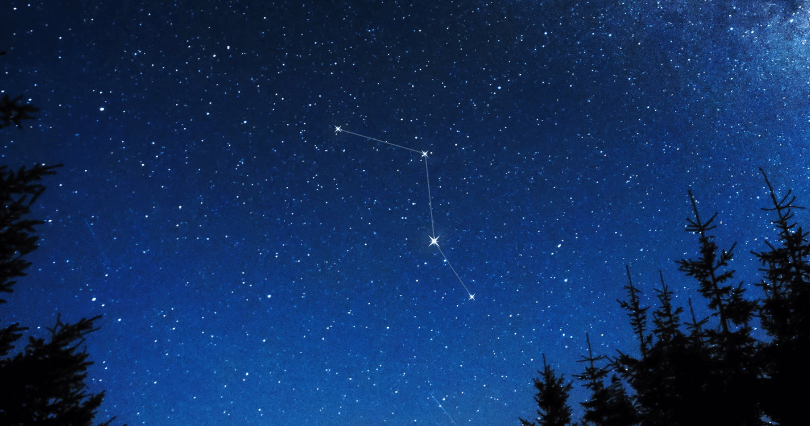
Caelum is not home to any Messier objects and there are no major meteor showers associated with the constellation. There are also no prominent deep sky objects in Caelum, but there is one star with a confirmed exoplanet, the eclipsing binary RR Caeli.
History and Mythology
Caelum constellation is one of the 14 constellations created by the French astronomer Nicolas Louis de Lacaille in the 18th century. In his 1763 catalogue, it was given the Latinized name Caelum Sculptoris.
Francis Baily shortened this name to Caelum, as suggested by John Herschel. It is depicted as a sculptor’s chisel as Lacaille named his constellations after various instruments and tools, not stories and myths.
Caelum is not associated with any myths.
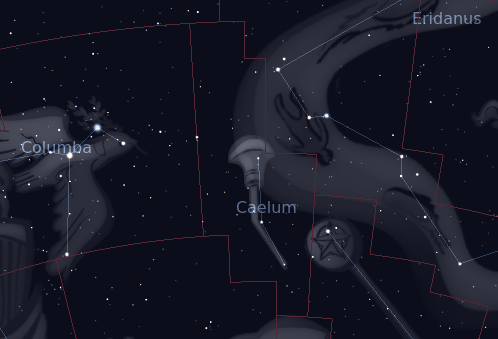
Location
Caelum is the eighth smallest constellation in the night sky, the 81st largest of the 88th modern constellations, and occupies an area of 125 square degrees. It lies in the first quadrant of the southern hemisphere (SQ1) and can be seen at latitudes between +40° and -90°.
Its right ascension is 04h 19.5m to 05h 05.1m and its declination is −27.02° to −48.74°. It is best seen at 9pm during the month of January. Its main stars are visible in favourable conditions and with a clear southern horizon for part of the year as far as about the 41st parallel north.
Caelum’s neighboring constellations are Columba, Dorado, Eridanus, Horologium, Lepus and Pictor and it belongs to the Lacaille family of constellations, along with Antlia, Circinus, Fornax, Horologium, Mensa, Microscopium, Norma, Octans, Pictor, Reticulum, Sculptor and Telescopium.
Notable Stars
Alpha Caeli
Alpha Caeli is the brightest star in the constellation and its apparent magnitude is only 4.44. It is a suspected member of the Ursa Major Moving Group, which are a group of stars that share similar velocities and likely originated from the same star cluster. It is located around 65.7 light years away from us and is about 900 million years old
Alpha Caeli is a binary star, with its primary component, Alpha Caeli A, an F-type main sequence star with an apparent magnitude of 4.44. It is a suspected Delta Scuti type variable star, which means it is a star that is exhibiting variations in luminosity as a result of both radial and non-radial pulsations on its surface.
The companion is a red dwarf belonging to the spectral class M0.5V. It has an apparent magnitude of 9.80 and is also a variable star, but of the UV Ceti type. This means it undergoes sudden extreme increases in luminosity for a few minutes.
Gamma Caeli
Gamma Caeli is the designation for two star systems separated by 0.22° in the sky: Gamma-1 Caeli and Gamma-2 Caeli.
Gamma-1 Caeli is a binary star that is located approximately 185 light years away from us. It is composed of an orange K-type giant and a magnitude eight companion located 3.1 arc seconds away. Gamma-1 Caeli has an apparent magnitude of 4.5, making it the second brightest star in Caelum.
Gamma-2 Caeli is also a binary star that is located around 334 light years away from Earth. It is composed of a yellow-white F-type giant classified as a Delta Scuti type variable and a companion star of the spectral type F2IV/V, with an apparent magnitude of 9.6.
Beta Caeli
Beta Caeli is the third brightest star and has an apparent magnitude of 5.04. It is a yellow-white F-type main sequence dwarf with a luminosity that is six times that of the Sun. It is located around 90.2 light years away from us.
Delta Caeli
Delta Caeli is a blue-white B-type subgiant with an apparent magnitude of 5.07. It is located around 711 light years away from us.
Nu Caeli
Nu Caeli is a yellow-white F-type main sequence dwarf with an apparent of 6.06. It is located around 171 light years away from us.
Zeta Caeli
Zeta Caeli is a K-type subgiant of spectral type K1. It is located around 430 light years away and has a magnitude of 6.36.
Lambda Caeli
Lambda Caeli is a red giant located around 740 light years away from Earth. It has a magnitude of 6.24.
RV Caeli
RV Caeli is a variable star. It is a pulsating red giant of spectral type M1III, which varies between magnitudes 6.44 and 6.56 .
RR Caeli
RR Caeli is an eclipsing binary star that consists of a dim red dwarf and a white dwarf. Its apparent magnitude is only 14.40, despite the fact that it is only located 65.7 light years away from us, and therefore cannot be easily seen with amateur equipment.
Deep Sky Objects
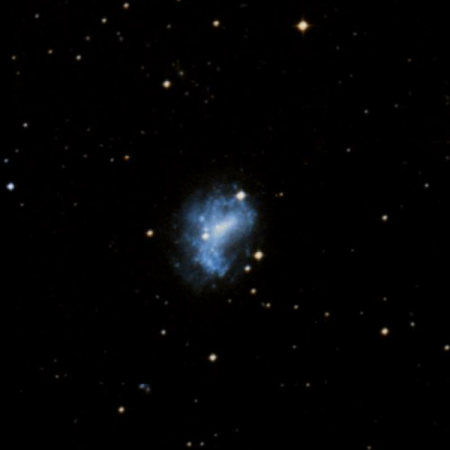
NGC 1679
NGC 1679 is a barred spiral galaxy that was discovered by John Herschel on 18 November, 1835. It has an apparent magnitude of 13.1 and is located around 48 million light years away from Earth, two degrees south of Zeta Caeli. It occupies an area 2.7′ × 2.0′ in size.
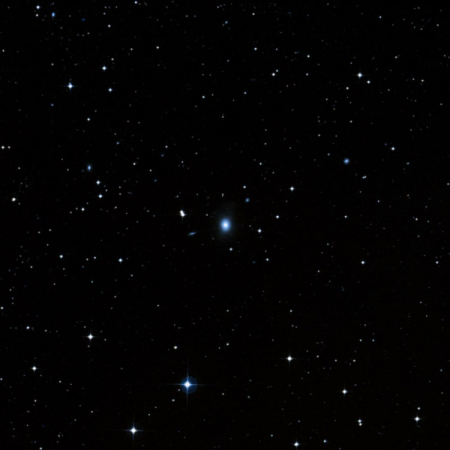
NGC 1571
NGC 1571 is a galaxy with an apparent magnitude of 12.3. It occupies an area 2.0′ x 1.5′ in size.
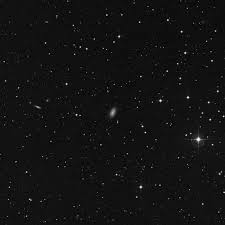
IC 2106
IC 2106 is a barred spiral galaxy that was discovered by Lewis Swift on December 26, 1897. It has a visual magnitude of 13 and is located around 229 million light years away from Earth.
Extra Facts
- The International Astronomical Union (IAU) adopted the three-letter abbreviation “Cae” for the constellation in 1922.
- The constellation’s boundaries, as set by Belgian astronomer Eugène Delporte in 1930, are a 12-sided polygon.
Images:
- Some Images created with the NightVision app – https://www.nvastro.com/nvj.html
- Some Images created with the Stelvision Sky Map https://www.stelvision.com/en/sky-map/
- Caelum 1 – https://starregistration.net/constellations/caelum-constellation.html
- Caelum 2 – https://in-the-sky.org/data/constellation.php?id=11
- NGC 1679 – https://in-the-sky.org/data/object.php?id=NGC1679
- Caelum 3 – https://en.wikipedia.org/wiki/Caelum
- NGC 1571 – https://in-the-sky.org/data/object.php?id=NGC1571
- IC 2106 – https://theskylive.com/sky/deepsky/ic2106-object